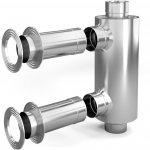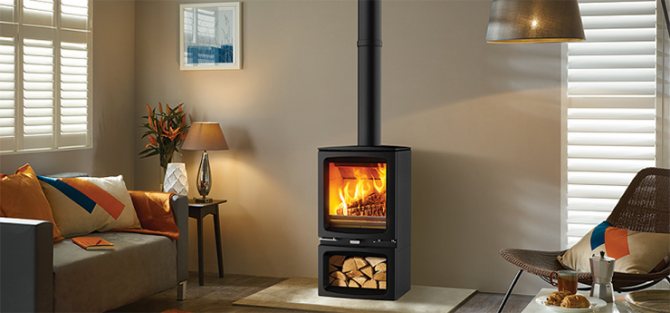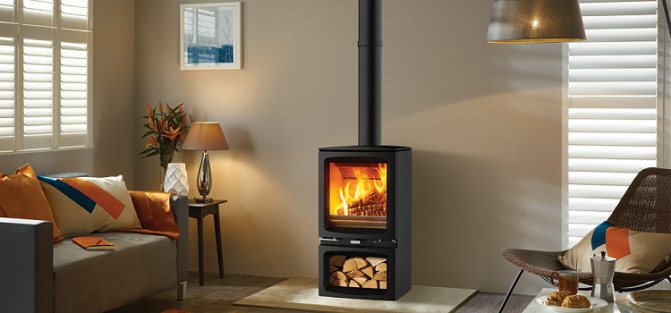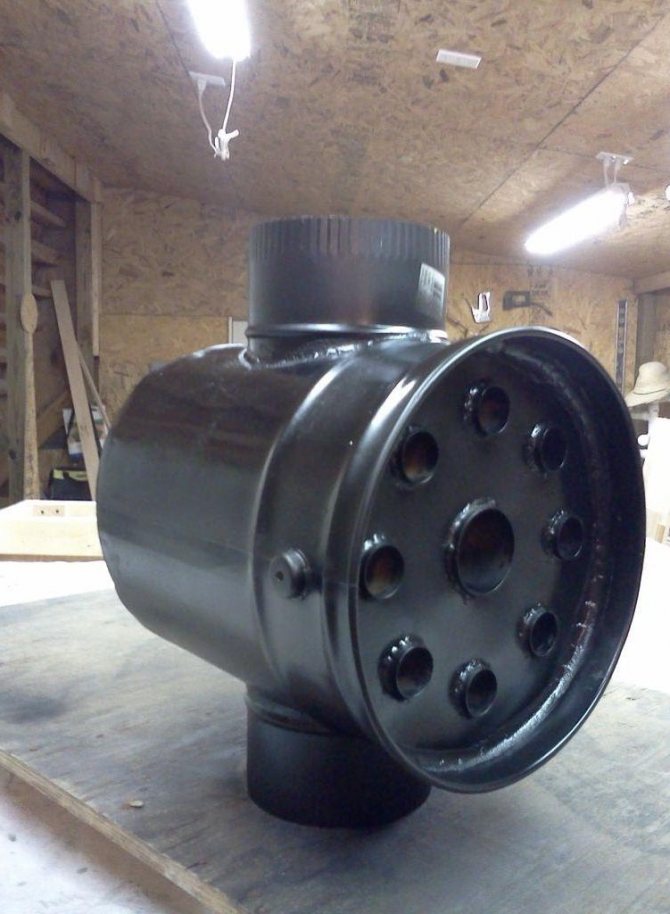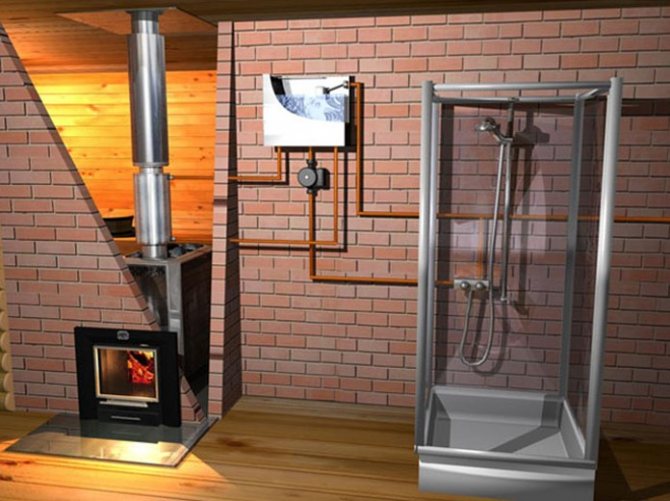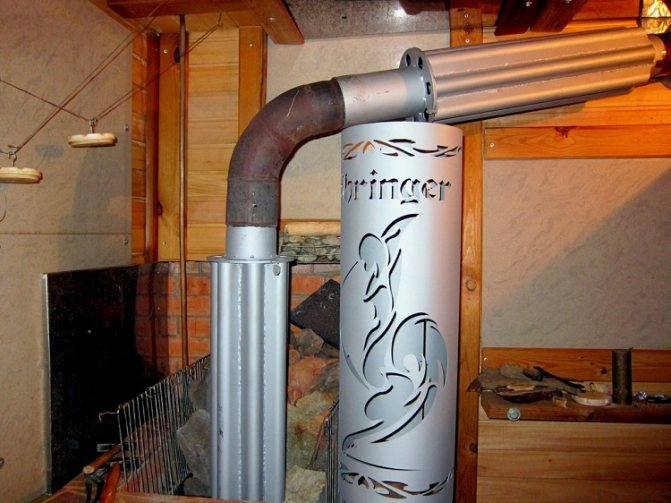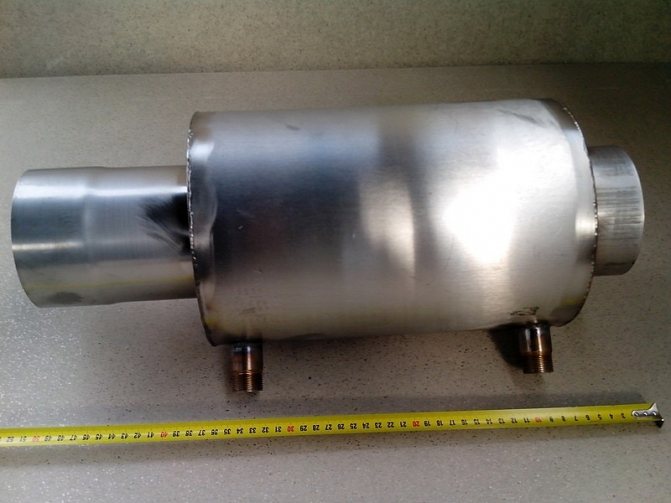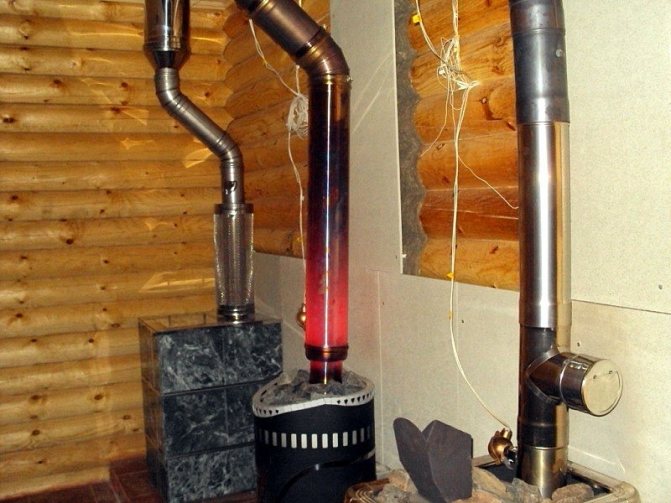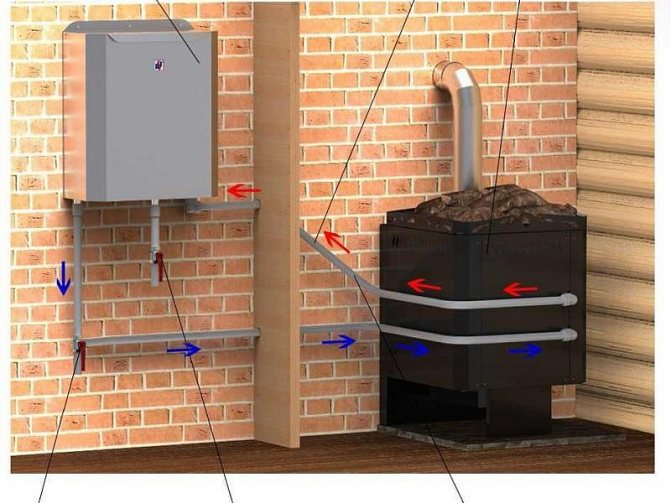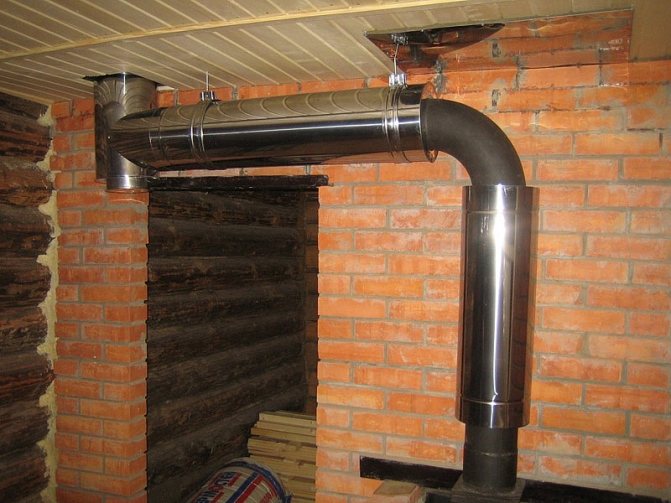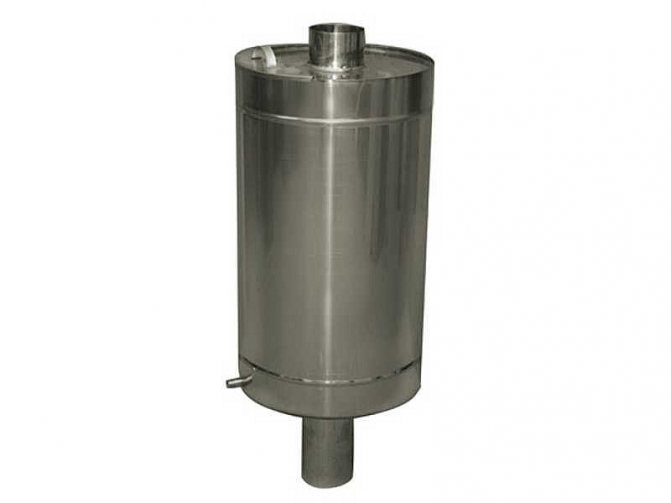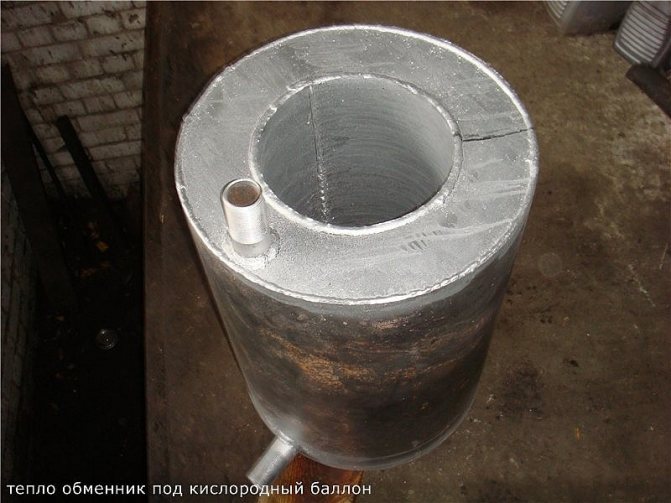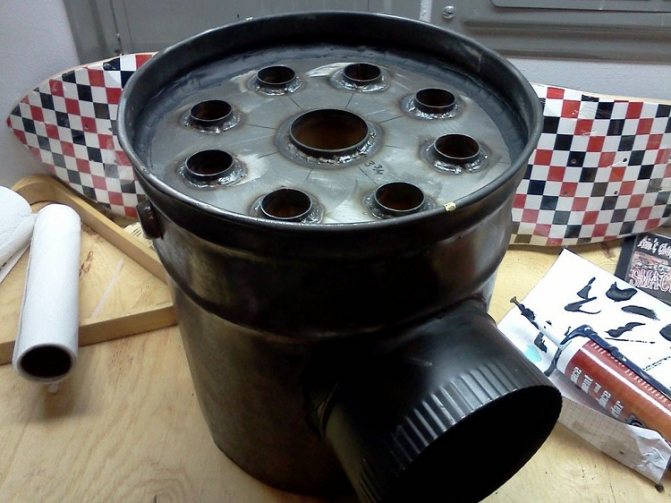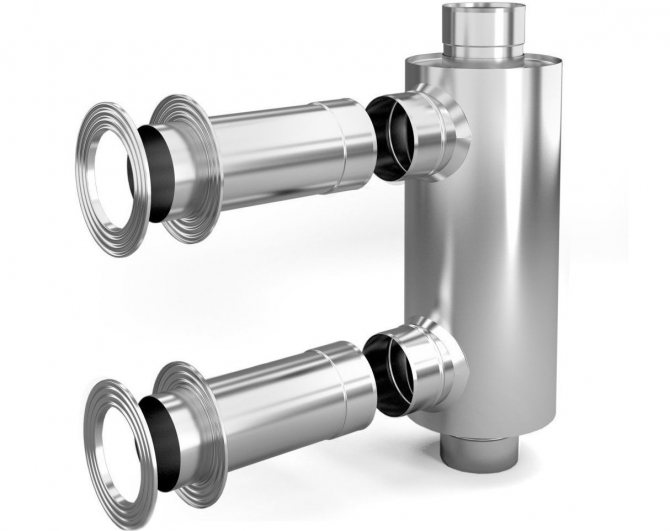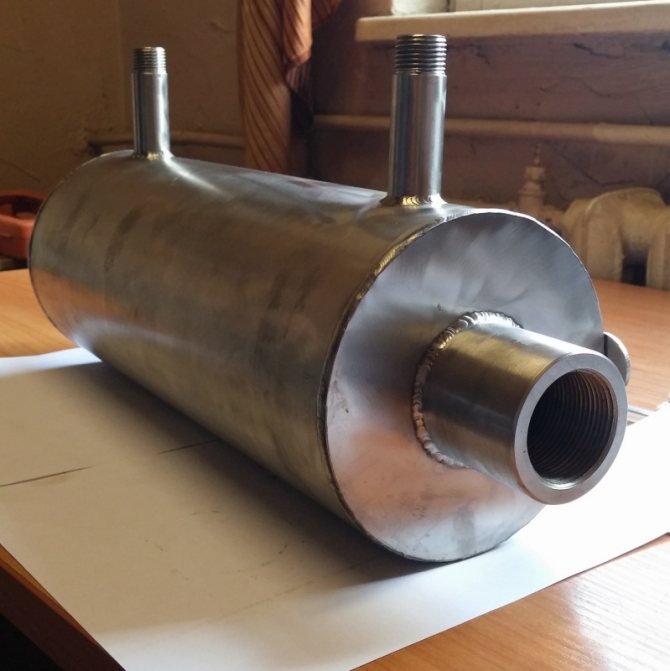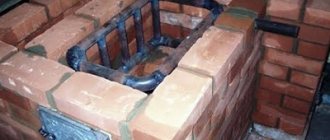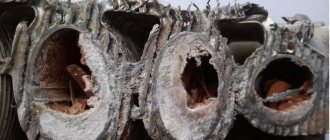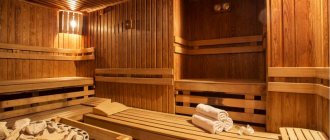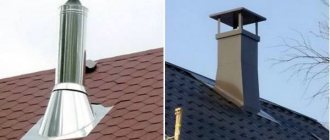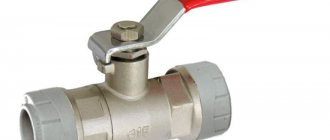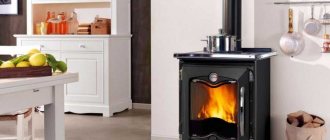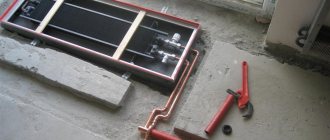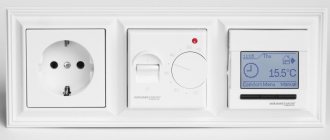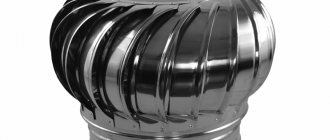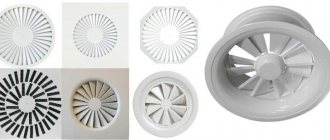Types of heat exchangers
During the selection of the described device, you can find products of various types. The most commonly used heat exchangers are made in the form of a coil. Corrugated devices are also popular. In addition, many people use products in which air acts as a coolant.
By the type of heat carrier, almost all devices can be divided into those that use air and products that heat water. Devices of the first type have a simpler structure, but are less efficient.
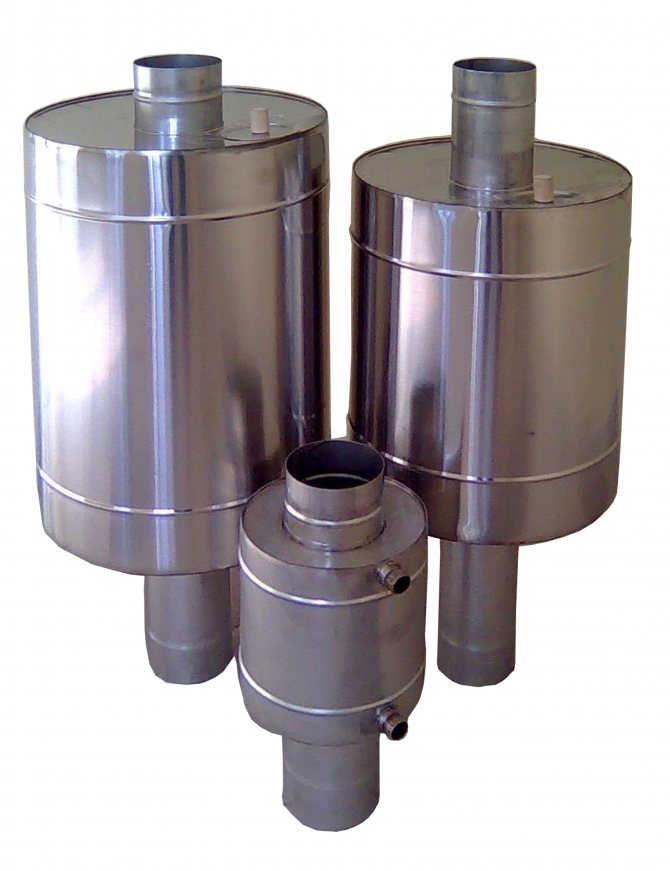
If you wish, you can create a heat exchanger for installation on a chimney with your own hands. This will require tools such as a grinder and a welding machine.
How to make a homemade chimney convector to heat the air? (+ detailed video)
To create the simplest convector that will improve air heating in the same room where the boiler is located, you will need:
- Welding machine.
- At least 8-10 thin steel tubes with a diameter of about 32 mm and a length of about 50-60 cm. Ideally, take food grade stainless steel. Worse, but also galvanized steel will do. In shape - usually take round tubes, but square or rectangular sections are also suitable.
Installation is carried out as follows: these pipes must be welded in a circle around the chimney, as close as possible to the firebox.
How to clean the chimney from soot with potato peelings?
What is a spark arrester, why is it needed on a chimney, and how to make it?
Similar posts
Liquid devices
During the manufacture of liquid heat exchangers, in order to make them safer, the core is placed in a metal case. At the same time, a heater is placed in it. Basalt wool is often used to create the described devices.
Such products are fixed on the chimney, which contributes to the heating of the coolant. If a coil is used, its ends are connected to the heating system. If the product is created by hand, you should make a copper coil. This is due to the fact that this material has a high thermal conductivity.
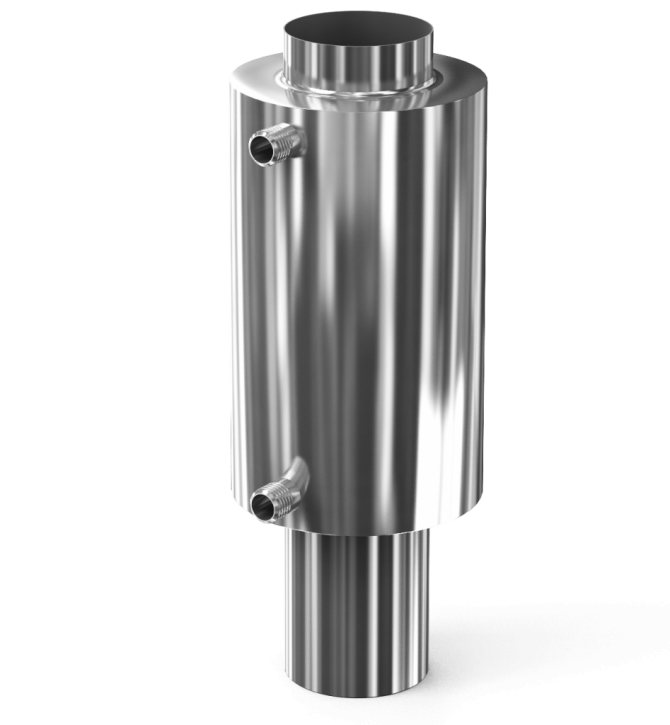

Some home owners use metal products, but to increase efficiency, you have to significantly increase the size of the structure.
The circulation of the coolant is carried out as follows:
- first, the liquid heats up, resulting in an increase in its volume;
- after that, she climbs the coil;
- after that, the liquid is directed to the radiator;
- the cooled coolant is displaced and directed to the heating element.
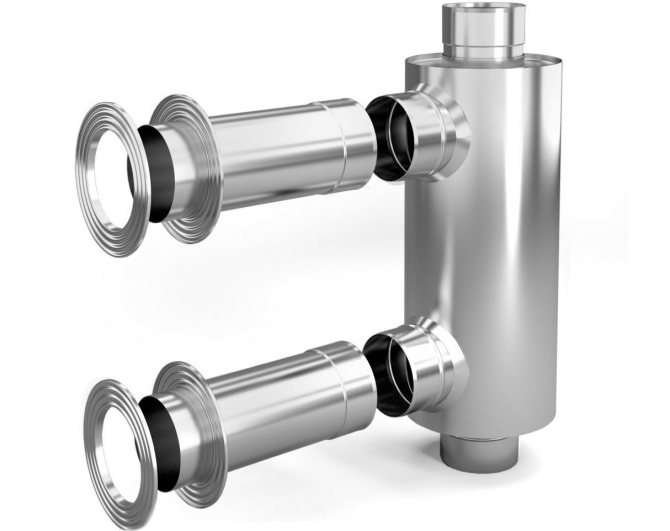

For the system to work effectively, it is necessary to calculate in advance such parameters as the length of the heating element and the diameter of the pipes used to create the system. If these parameters are not taken into account, the system will not work efficiently. In some cases, due to mistakes made during the creation of the system, a water hammer occurs.
When installing a heat exchanger on a chimney pipe, you should remember that the construction must be safe. Its heated parts must not come into contact with materials that could catch fire.
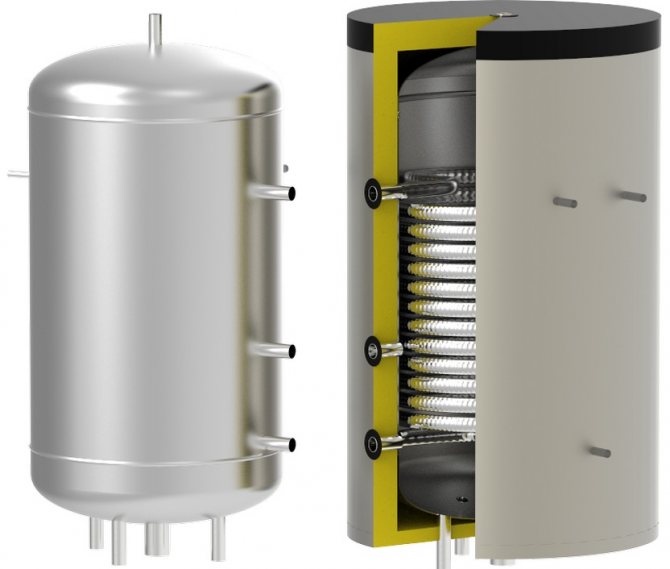

Reviews of heat exchangers made of different materials
According to home craftsmen, a heat exchanger for a pipe is best made of food-grade stainless steel. It is also called austenitic. Even when exposed to high temperatures, the characteristics of the material will not change, the welds retain their strength, the structure will not crack, while nickel, which will be exposed to oxygen, will form a protective film that is resistant to acids and salts. This option, according to users, is the most durable.
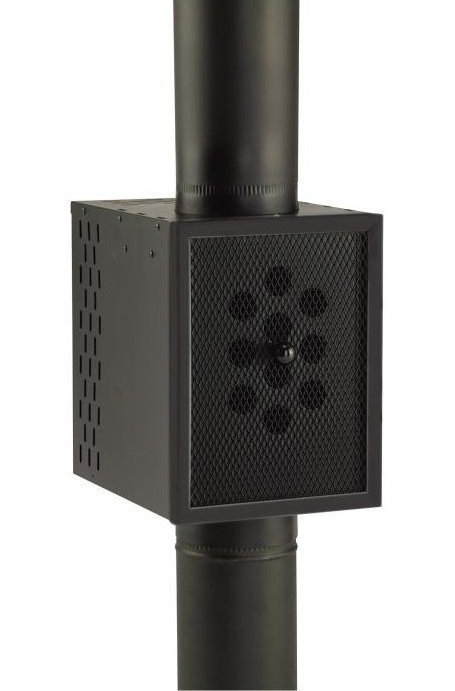

Disadvantages of liquid heat exchangers
The disadvantages of the described devices include:
- The complexity of manufacturing and making calculations.Before carrying out work on the creation of a device, it is important to take into account the area of the house and other parameters that can affect the efficiency of the system.
- The need for constant monitoring of such system parameters as coolant pressure and temperature.
- Increased liquid consumption associated with its evaporation from the expansion tank. Moreover, in winter, if the house is empty, the liquid must be completely drained.
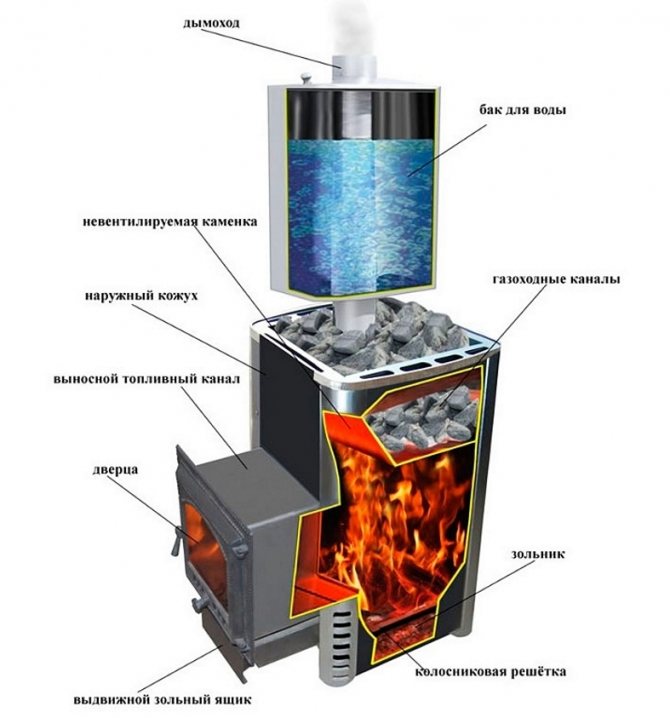

But it should be noted that almost any person with knowledge of physics at the school level can make a liquid heat exchanger. But before manufacturing the device, it is important to draw up a drawing of the entire structure, which will display the dimensions of all elements.
When using a liquid device, remember that if the house is not being used during the winter, the liquid must be completely drained. If this is not done, it will turn into ice, which can lead to the destruction of pipes and radiators. If the heat exchanger is installed in a house that is used all year round, you can forget about this drawback.
Alternative solutions
If a heat exchanger for a chimney pipe is made of zinc, then already at a temperature of 200 ° C it will begin to evaporate, while at 500 ° C its concentration in the air will become dangerous. Therefore, when using a galvanized profile heat exchanger, it must be operated at a temperature not exceeding 200 ° C. According to home craftsmen, it is possible to install such a structure, because it will act as an air convector, the last of which flows around the heat exchanger.
For constant heating, such a device is not suitable, whereas if from time to time you need to quickly warm up the attic, then this is what you need. Before installing such a system, it is important to think about the specifics of the installation. It is quite simple to carry out such work. Fastening can be done on an iron stove, even if afterwards it is necessary to overlay it with bricks. The laying of products should be carried out on the edge, even in this case, the structure will remain stable.
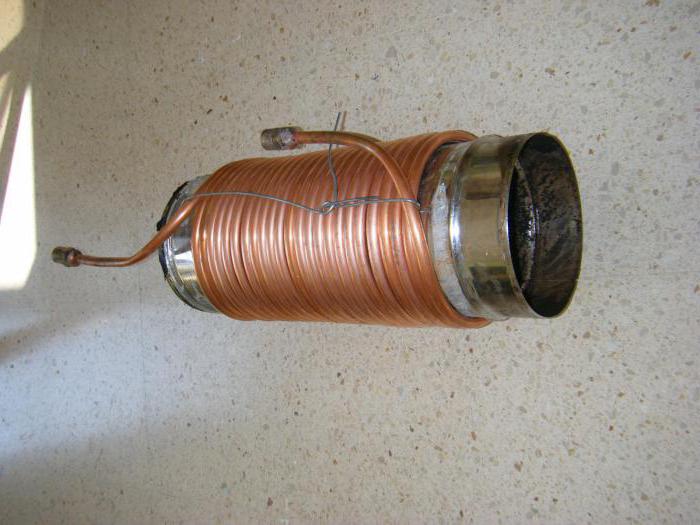

Features of air heat exchangers
Devices of the described type consist of a metal case, inside which there are several nozzles. During the operation of the system, cold air heats up and enters the room.
If desired, you can make and install an air heat exchanger on the chimney with your own hands. To do this, you need to have several metal pipes of various diameters, a grinder and a welding machine.
Before work, you must purchase the following materials:
- a piece of pipe having a diameter of 50 mm;
- a pipe 2.4 m long and 3.175 cm in diameter;
- metal sheet 350x350x1 mm;
- 2 liter metal container.
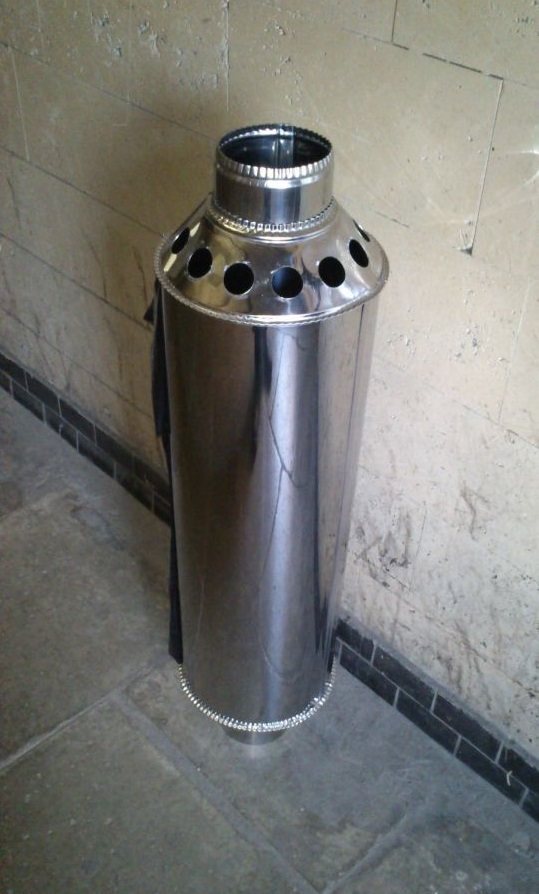

The manufacture of a heat exchanger begins with cutting out metal circles. After that, in the center of the created circles, you need to cut holes for a 5 cm pipe. Around the holes, it is necessary to mark the points at which 8 openings will be cut for a pipe with a diameter of 3.175 cm. This pipe must be cut into 8 sections. The result is 8 tubes 30 cm long.
The next step is to attach a pipe with a diameter of 50 mm to the central hole. Sections 30 cm long are welded to the side holes. As a result of the work carried out, a heat exchanger core will be created. After that, you can start creating the device case.
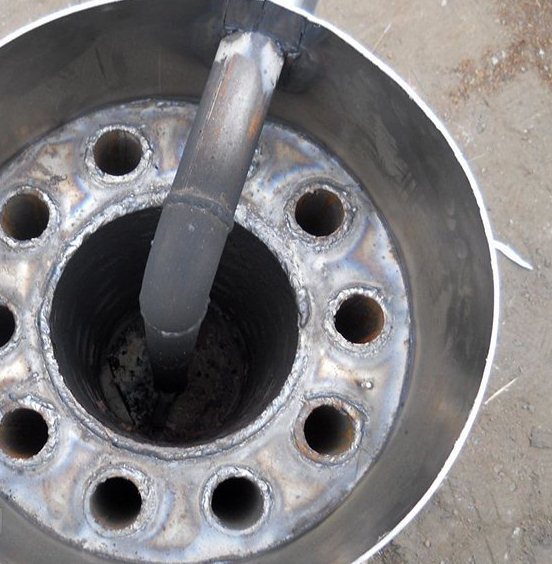

After the described actions, you need to cut off the bottom of the previously prepared metal tank with a grinder. On the sides it is necessary to cut a hole that is equal to the diameter of the chimney.
Then you need to connect the pipes. The created heat exchanger body must be put on the core and then welded to it. After carrying out such work, the structures should be covered with heat-resistant paint. When it is dry, you can install a heat exchanger on the chimney.
How to install a heat exchanger with your own hands: instructions
The installation of the heat exchanger on the chimney takes place on the basis of a ready-made container (for example, the “Ermak” model), which can be purchased in a store, or made independently from stainless steel sheet or copper tube.
How to choose a metal for making a device
The following types of metal are used for the manufacture of heat exchangers:
- stainless steel;
- galvanized sheet;
- copper.
The choice depends on the design of the furnace, its power and temperature regime.
If the operating temperature of the furnace equipment does not exceed 200 degrees, then any metal is suitable for installing the heat exchanger.
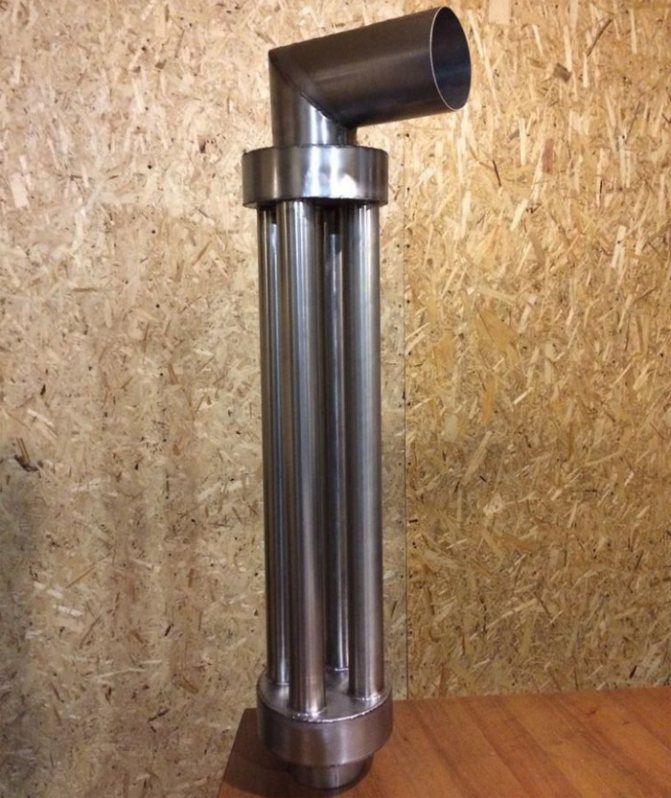

If the oven heats up above 200 degrees, then the use of thin-walled galvanized tanks is not recommended, since the high temperature can deform the container.
Note! It should be borne in mind that when heated, the zinc coating releases toxic substances. For high-performance stove heating, it is recommended to use stainless steel heat exchangers.
For a heat exchanger in the form of a coil (a tube that is installed spirally around the chimney), copper is used as the optimal metal in terms of ductility, thermal conductivity, strength and corrosion resistance.
If you wish, you can make a coil yourself by bending the pipe with a spiral so that its inner diameter is 1-2 mm larger than the chimney pipe.
Note! For the manufacture of a samovar-type heat exchanger, copper is not suitable.
Features of devices used in the bath
By design, the described devices can be divided into built-in ones attached to the chimney. Products of the second type are often called samovar-type devices.
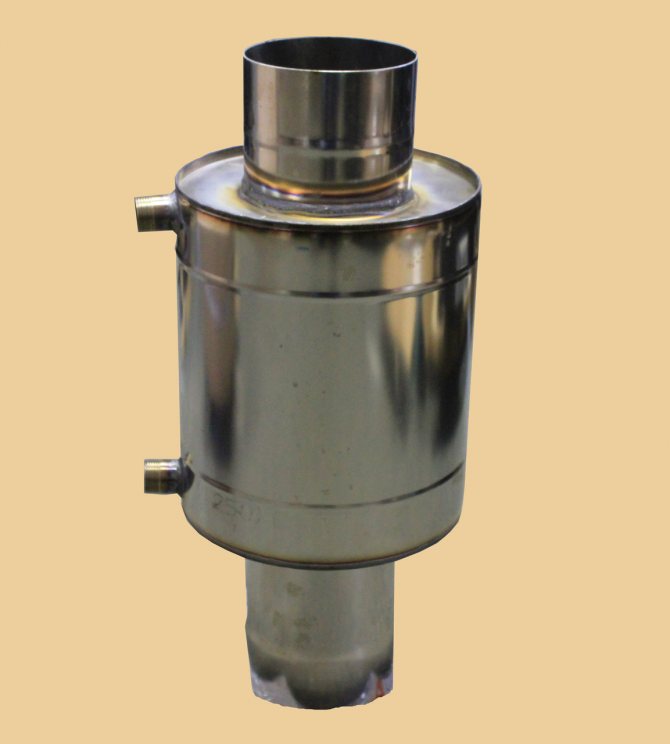

Built-in structures consist of a small cistern with a capacity of up to 5 liters. It is installed between the firebox and the heat generator casing.
A container with a volume of up to 100 liters is connected to the heat exchanger using pipes. After heating the heating system, hot water rises through the pipe. The cooled coolant flows back to the heat exchanger. Due to this, the required temperature of the coolant is maintained in the external tank.
Samovar-type devices are a sealed container encircling the chimney. In the process of heating the liquid, in this case, the heat from the combustion products moving through the pipe is used.
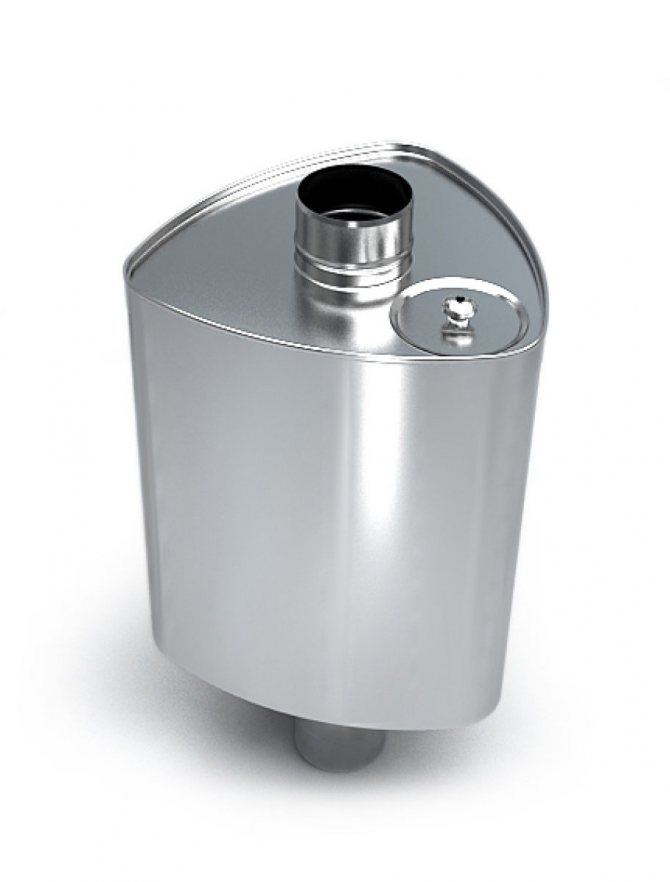

Installation features
The heat exchanger on the chimney pipe can be installed independently, and it will work in one of two modes. In each of them, a certain process of heat transfer from the smoke to the inner pipe takes place. In the first mode, connect the remote tank to the heat exchanger. In this case, water will condense on the inner pipe, the heat exchanger will begin to heat up due to the heat of the flue gases. In this case, the temperature on the pipe wall will not exceed 100 ° C, the water in the tank will heat up for a long time.
In the second mode, condensation on the inner walls of the heat exchanger will not occur at all. The heat flow will go more significantly, the water will heat up quickly. In order to become more familiar with this process, you need to put a pot of water on a gas burner. You will see how condensation will appear on the walls, which will drip onto the stove. This stage will last long enough until the water warms up. If you use a heat exchanger as a register for heating water, then you should give preference to small structures with thick walls, in this case there will be less condensation.
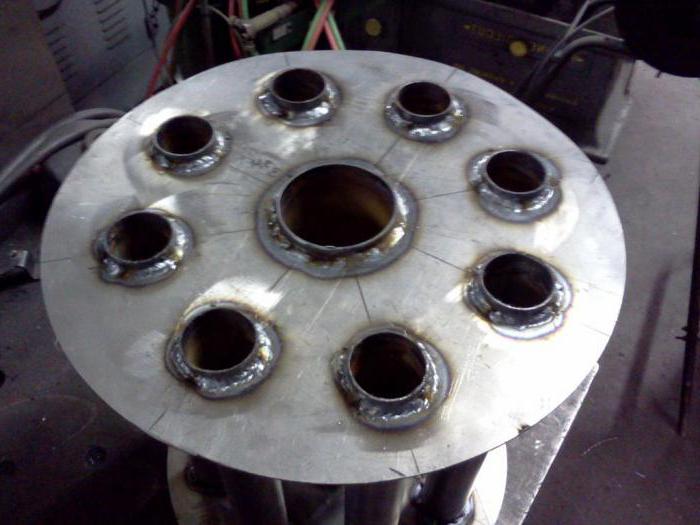

Sauna stoves with heat exchanger
The advantages of the described structures include:
- Simultaneous solution of two tasks - heating the steam room and dressing room, as well as heating water.
- Possibility of installing the tank in a room that is located closer to the steam room.
- Long term of use. This is due to the use of high quality materials.
- No need for maintenance of the structure.
- Small oven dimensions. This saves space in the steam room.
- The power of the furnace with a heat exchanger is sufficient for quick heating of the room.
When carrying out work on the installation of the heat exchanger, you should remember some rules. For example, it is necessary to connect pipes in the system in such a way that they are not rigidly fixed near the walls. This is due to the change in their linear parameters during heating of the coolant.
It should also be remembered that high temperature resistant materials must be used to seal the threads. The choice of the volume of the container installed in the bath should be carried out taking into account the fact that the heating is carried out within two hours.
Recommendations for installing a heat exchanger on the chimney of a gas boiler
A heat exchanger on the chimney pipe of a gas boiler can also be installed. However, it is necessary to carry out such work only with special skills. If there are none, then it is recommended to contact a specialist. To carry out the work, it is necessary to place a coil inside the chimney, which is made of thin-walled copper pipes. A less successful option is stainless steel products.
Air will be pumped through the pipe during operation. Chimneys for boilers are equipped with heat exchangers, the pipe pitch of which is determined in such a way that the distance between the axes of the turns is 5 pipe diameters. If this value is increased, then you can encounter heat losses, with a decrease in this parameter, the pipe flow rate will increase and the shielding effect will appear. If chimneys for boilers are supplied with heat exchangers made with a step that is less than the recommended one, then you may encounter the problem of overheating of the pipeline. Welding can be done with argon welding, but some experts recommend refusing soldering, since pipes are operated at elevated temperatures.

